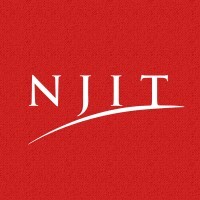The data science field is expanding because so many businesses and other institutions require skilled workers who can manage data as well as provide insights. Companies and students are clamoring for more academic programs. There is great need, but academic institutions are still transitioning to meet the demand. Dr. David Bader, Distinguished Professor and Director of the Institute for Data Science at the New Jersey Institute of Technology, explains how his school is leading the charge to create opportunities for more students to study data science.
Main Takeaways
- Connecting Data and Graphs: A current area of focus concerning data science for Bader and his institution is taking huge amounts of data and associating it with corresponding graphs. This process helps provide context to the data so insights can be gleaned.
- Arriving at Insights With Less Data: One difficulty with gaining insights is that typically it takes a lot of data points to make sense of a significant occurrence. Often, in the real world, insights need to be determined faster and with less data. Consider the archetype of the malevolent lone wolf who may have not had done the behavior previously. The answer is two-fold in order to stop a lone wolf type of situation. One, create more context to whatever data is obtainable. Second, consider data that may not be the exact same behavior but is still relevant.
- Academia Is Rising to the Challenge: All manner of institutions now have massive amounts of data and need people to manage it and provide insights. Academia may be somewhat slow to change but there is a push from companies and from students for more data science programs. These sorts of programs are growing throughout higher education but there is much more room for expansion.
For a more in-depth look at this episode, check out the article below.
Article Notes
The data science field is expanding because so many businesses and other institutions require skilled workers who can manage data as well as provide insights. Companies and students are clamoring for more academic programs. There is great need, but academic institutions are still transitioning to meet the demand. Dr. David Bader, Distinguished Professor and Director of the Institute for Data Science at the New Jersey Institute of Technology, explained how his school is leading the charge to create opportunities for more students to study data science.
“We talk with so many companies and also government, and we’re trying to create industry/academia partnerships to be able to solve many of those problems,” Bader said. “And the demand is just huge. We’re a pioneer in this area. We’re really leading the way and are trying to encourage other universities to move into this space. Universities sometimes have a reputation of moving slowly. But because of that, we decided that we really had a need. This region that we’re in is just growing and data science clearly is in the future of every company in every sector. And we took a leadership role. We’re also a part of some consortium. For instance, the Academic Data Science Alliance is a great way for universities and data science leaders to come together to talk about creating such programs and looking at what programs have already been created around the country.”
On a recent episode of IT Visionaries, Bader chatted about how academic institutions are creating more programs to prepare future workers well-versed in data science. He also explained the wide-ranging data science research currently being conducted within academia and how its applications are relevant to many industries.
Bader revealed the main research focus at the Institute for Data Science at the New Jersey Institute of Technology and how it can be applied across various areas.
“What we’re working on is really getting insights and exploring data sets,” Bader said. “Imagine someone hands you a big trove of data, and you have no idea what’s contained in there, but yet you want to pull some intelligence out of it. So we work in that domain. Often, we’re looking at, for instance, data that can be viewed as graphs; where the entities may be represented as vertices and the relationships as edges between them kind of like a social network but on steroids. We’re looking at very massive data sets and the disciplines that we apply to are just ever growing. We look at health; personalized health and medicine. We look at cyber security applications. We look at urban sustainability. We even look at things like, how do we ensure trustworthy elections?”
The data meets graphing system is about providing context and helping to make connections between different pieces of data. Then, Bader suggested that the discovery process is about following the trail to find appreciable relevant data that others might not see as worthwhile and discard.
“Another way to think about it is that recommender systems are strong correlations versus what we look at is data at the very long end of the tail,” Bader said. “Often, this is the type of data that looks like noise. You may just throw it away. Versus, we look for signals within that noise to find…that one sign that may be [leading] to some egregious event or some very important matter that we have to attend to, depending on what discipline we’re looking at.”
Oftentimes, a large amount of data and a high number of particular occurrences are necessary in order to gain insight. In certain cases, it is not possible to wait for a huge data set of a certain repetitive behavior. As an example. Bader explained how data can be used to help prevent a lone wolf, intent on malevolence, from completing a horrific act.
“There are many cases where we’ve had lone wolves,” Bader said. “For instance, at Fort Hood in the United States, a number of years ago, we had Major Nidal Hasan who was a cleared army psychologist who one day, came in, and killed a number of people. And before that, there had never been any issue. There’s no disciplinary issues, et cetera. And we weren’t going to wait for statistical significance with lone wolves. For instance, you don’t want to wait until after an event like that happens. What you want to be able to do is give a security officer some heads-up that we think this person’s pattern of life has changed.”
Regardless of the amount of data, it’s clear that efficiently creating context is paramount in order to gain actionable insights.
To hear more about how the Institute for Data Science at the New Jersey Institute of Technology is tackling the big data challenges while educating the next generation of data experts, check out the full episode of IT Visionaries!
IT Visionaries is brought to you by the Salesforce Platform – the #1 cloud platform for digital transformation of every experience. Build connected experiences, empower every employee, and deliver continuous innovation – with the customer at the center of everything you do. Learn more at salesforce.com/platform




